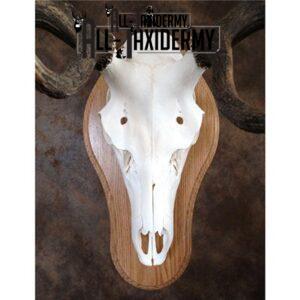People use taxidermy today for a wide range of purposes, much like it has been for centuries. Taxidermy dates back to ancient Egypt. The Egyptians were known for their development in new techniques for their time. Taxidermy has taken many forms over the centuries and has grown through various practices.
Early Forms of Taxidermy
In Egypt, taxidermy was a way to preserve animals that were pets of pharaohs and other nobility. This was so the animals could be buried alongside the pharaoh or nobility. One of the most notable animals the Egyptians preserved was a hippopotamus.
The Egyptians were the first to develop the preservation of living species through the use of embalming tools and oils. While the original methods had a different purpose, they did pave the way for new taxidermy techniques.

Early Preservation of Animal Hides
Preserving animal hides is a form of taxidermy that was popular among Europeans and Native Americans. The skins and hides of animals were used for various purposes, such as boots, jackets, shirts, pants, and bedding. Animal hides were also used or religious or cultural practices within a group.
Renewed Development and New Techniques
For a long time, taxidermy was lost, it wasn’t until after the Dark Ages that people took an interest in the art again. This was the start of the Renaissance and Scientific Revolution, which lasted into the 1600s.
With this new interest in preserving animal skins and hides, also came the interest in recreating life-like mounts of the animals. This is also the time that museums started to utilize this form of preservation to recreate life-life displays to feature various wild animals for people to observe. More on cool facts about taxidermy here.
Early Taxidermy Methods
In the early methods to create animal mounts, everything from the original animal was removed, but with this method, they stuffed the animal skin with various materials, and the skin or hide was stitched around this frame.
Due to this method, oftentimes, the animals no longer looked natural. Some early taxidermists had also never seen wild animals in nature before. This led to some errors in judgment, which resulted in poorly created taxidermy mounts.
Taxidermy Methods in the 18th and 19th Centuries
As taxidermy evolved, the methods used by taxidermists began to change. The use of Styrofoam and metal rods started to help mimic the skeletons, which improved the look of the taxidermy mount. Styrofoam could be molded so that it looked more natural once the skin was placed around the frame. Metal rods could be inserted into Styrofoam to provide “bone-like” support for legs, heads, and tails.
Taxidermy in the 20th Century
There were various ways to prepare and preserve animals such as whitetail deer for taxidermy. A common tactic to prepare the bones was to bury the body into the ground once the hide was removed to let nature work its magic.
In the 1980s, a new method of cleaning the bones started in museums where they used flesh-eating beetles, called Dermestid beetles. Using thee beetles allowed for the taxidermist to clean the bones without worrying about damaging the structure.
Gradually, taxidermists also started using Dermestid beetles to clean the flesh from carcasses when they were creating European mounts, skeleton mounts, or needed parts of the skeleton to create a trophy mount or life-size replica.

The Future of Taxidermy
While various taxidermy methods developed over the decades continue to be used today, more and more methods continued to be studied, such as using robotic engineers to create life-like moving animal displays that interact with guests at a museum.
Taxidermy has come a long way since ancient Egypt, and it has evolved into a form of art and science to preserve and better understand animals. Today, popular animals that are often taxidermied include deer, bear, big cats (lions, leopards, cougars, bobcats, etc), fish, and birds.
If you are interested in preserving animal skulls or creating a skull mount, or you want a skull-cleaning service, please feel free to contact the professional taxidermists at All-Taxidermy today! We are skilled in taxidermy of animals from North America, Africa, Asia, and Europe. Call or contact us online for a quote.



